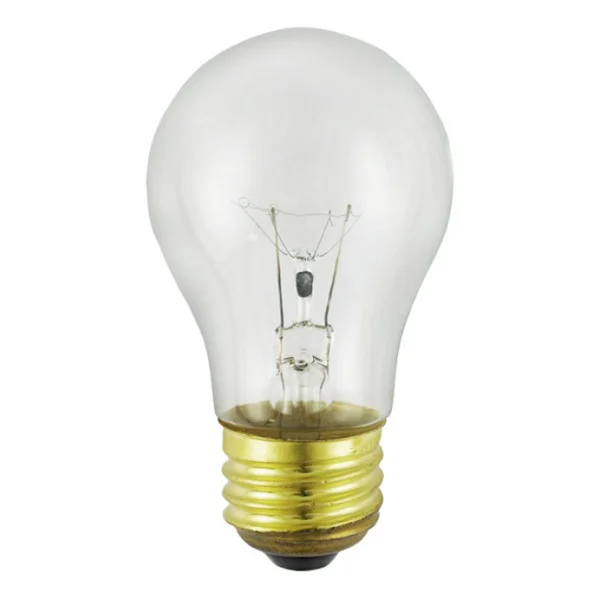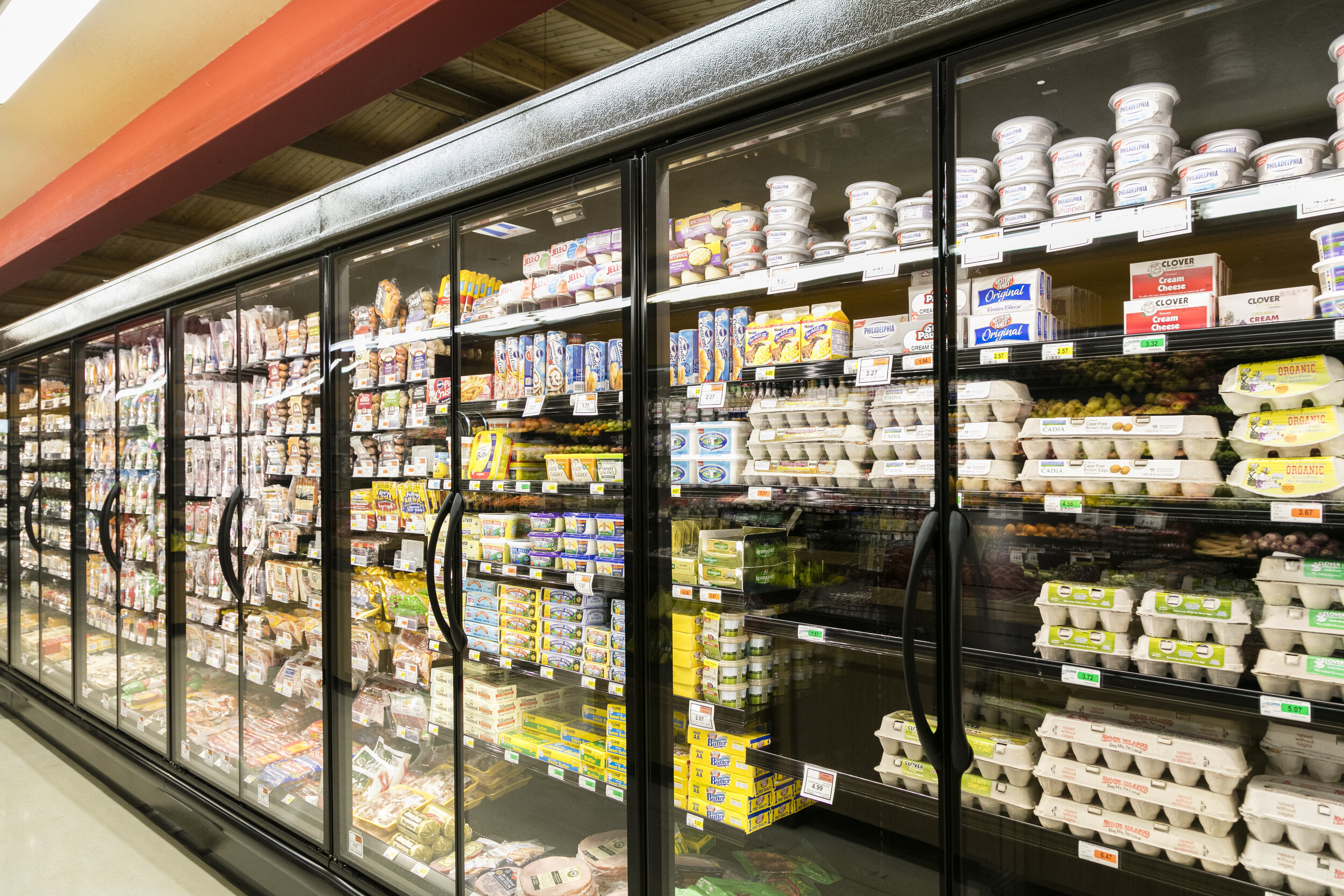Light Bulbs for Appliances
Burnt out light bulbs are an annoying fact of life. At some point, every light bulb needs to be changed, including appliances you didn’t even realize were lit—until they aren’t. To avoid that dark midnight scramble inside the fridge for the last piece of cake, here’s what you need know about the most common types of appliance bulbs in your home or business.
Lighting Tip: if you’re not sure what wattage, bulb shape, or voltage you need for your appliance, hunt down that owner’s manual and find out. You can also search the web for specifications on your appliance or even call the manufacturer for an answer.
Ovens and Refrigerators – The typical light in your oven or fridge is the familiar incandescent A-shape. The difference is the slightly smaller, incandescent A15 bulb (instead of A19) is appliance rated. That means it is designed to consistently turn on even though the light is exposed to higher hot or lower cold temperatures for long periods of time. These bulbs are usually 25 or 40 watts, run on 130 Volts, and are often shatterproof.
Microwaves – Warming up that spaghetti takeout in your microwave may seem daunting without a light to ensure hard-to-clean sauce isn’t splattered everywhere. When you are faced with a sightless reheating moment, many microwaves use a small incandescent T7 bulb to illuminate their interiors. The T7 bulb is approximately no more than 2.5 inches long and about 0.9 inches wide. Commonly, an E17 or intermediate base with a 17 millimeter diameter accompanies this bulb, but you also find microwaves that use a T7 bulb with a candelabra base.
LEDs – With the adoption rate of LEDs on the rise, you may think you can just switch that pesky incandescent for an LED and never have to change the light again. It’s a great idea, but it’s only applicable to your fridge or freezer. LEDs don’t like heat; the higher temperatures ruin their lifespan. That’s one of the main reasons the original household LED bulb had an unsightly heat sink as part of the design. If you stick an LED in your oven, the constant heating (not to mention the temperature of an oven in self-cleaning mode) will cause the LED to dim and then fail very quickly. There is also a high probability you will damage your oven or its light socket. However, an appliance rated LED can be fridge and freezer-friendly. Be sure to double check the rating and that the bulb is the same wattage equivalency as whatever incandescent brethren came before it.
Fluorescent Lighting for Commercial Refrigeration and Food Preparation
If you’re looking to light your walk-in or glass-door display refrigerator, the standard is to use fluorescents. Depending on the size and requirements of your fridge, you can find T5 to T12 linear fluorescent tubes to fit the fixture. Produce and meat rated fluorescents can handle the cool temperatures and exposure to moisture or naturally-occurring condensation. You can use these types of lights in produce coolers, meat counters, seafood and deli displays, floral displays, or pastry shelves. In general, fluorescents shine a colder light on food, which results in lower surface temperatures than incandescents. These mild temperatures create less germ growth, improving the overall shelf life of your favorite steak cut.
Simple appliance rated fluorescents can be used in vending machines and food preparation areas like food trucks or restaurant kitchens. Vending machines tend to use shorter, 2-foot T8 or T12 tubes. Any area where the lighting will be around food but not in very close proximity should have a National Sanitation Foundation (now known as NSF International) rating. This includes food trucks, restaurant kitchens, cafeterias, or food processing plants. There are three NSF zones: the Food Zone, the Non-Food Zone, and the Splash Zone.
The Food Zone refers to anything touching food, so unless you’re sticking T8 tubes in your bread and rendering it inedible, this area is not applicable to lighting. Specifically, a rating of NSF-2 is acceptable for lighting and its fixtures in the other two NSF zones. The Non-Food Zone is basically food storage, where the food is normally already packaged and no cooking is occurring. The Splash Zone happens when the lighting installed above a food preparation area, which require sanitation procedures as well, has the potential of dripping unwanted liquids into your food intentionally or inadvertently. The steam or grease from food cooking or the high pressure hose used in washdown areas are example of concerns. Things like the cleansing liquids used in decontamination could cause drips from the light fixture and taint your food. An NSF-2 rating means the lamp is shatter-resistant and made to withstand repeated water jets during decontamination. The average wet location bulb is not recommended nor an acceptable substitute. LED tubes with the appropriate ratings can be found for produce and meat lighting, commercial refrigeration, as well as NSF-rated LEDs for food preparation.
Remember that when in doubt, the first thing to do is read your appliance’s manual and thoroughly read the specifications of any light bulb you consider. If you want to brag about your oven or microwave bulb-changing skills, have more questions about what of kind of light bulb you need, or just want to entertain us with lighting trivia, please write your comment in the area below. Our best lighting tips, jokes, and plethora of lighting décor ideas can be found on our Facebook, Twitter, LinkedIn, or Pinterest. The 1000Bulbs.com staff delights in being ready to answer those befuddling and quirky lighting mysteries, so call us at 1-800-624-4488, Monday through Friday, 7am to 7pm CST for an answer.
Sources
https://www.nsf.org/newsroom_pdf/fe_certified_surfacing_materials.pdf http://nrarep.net/NSF_Ratings.pdf









